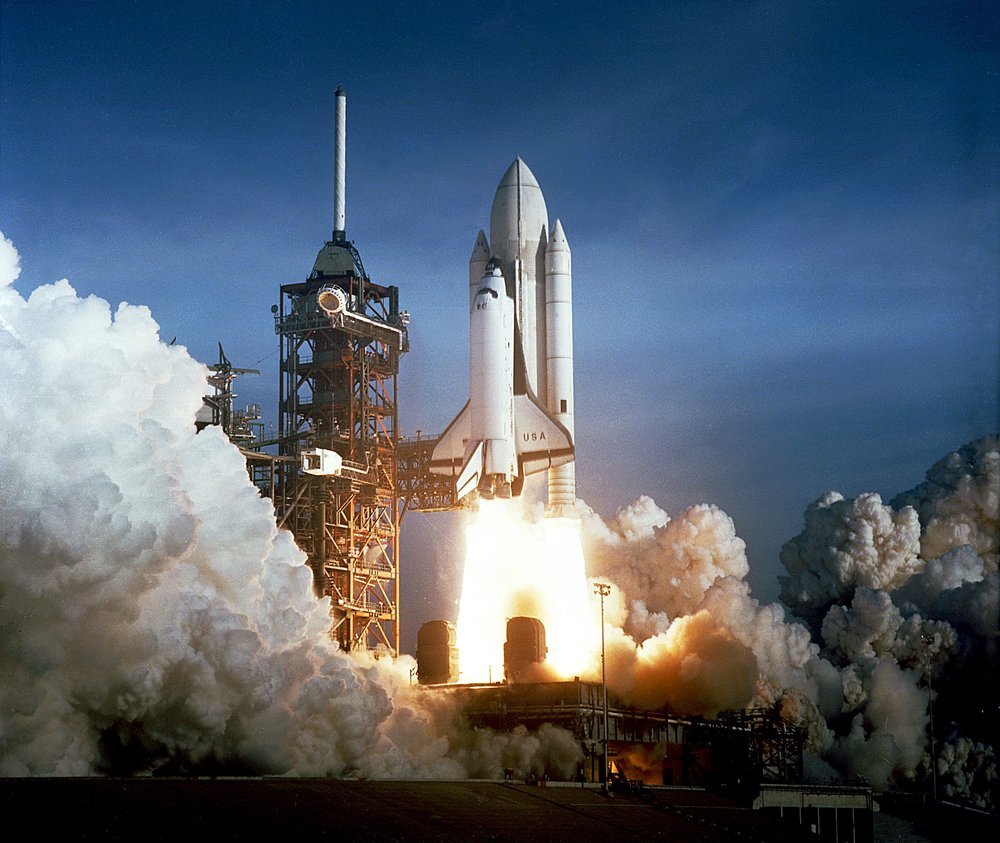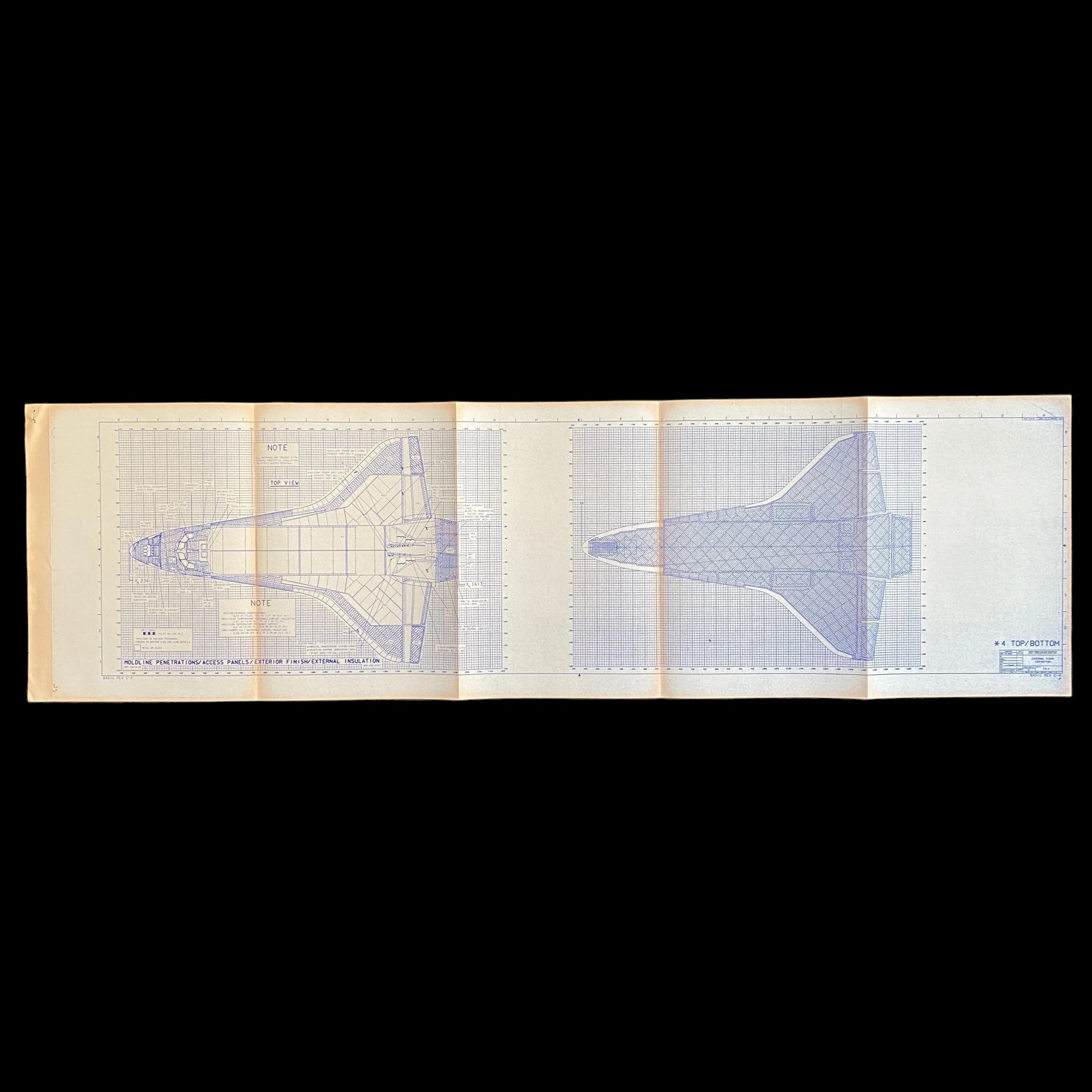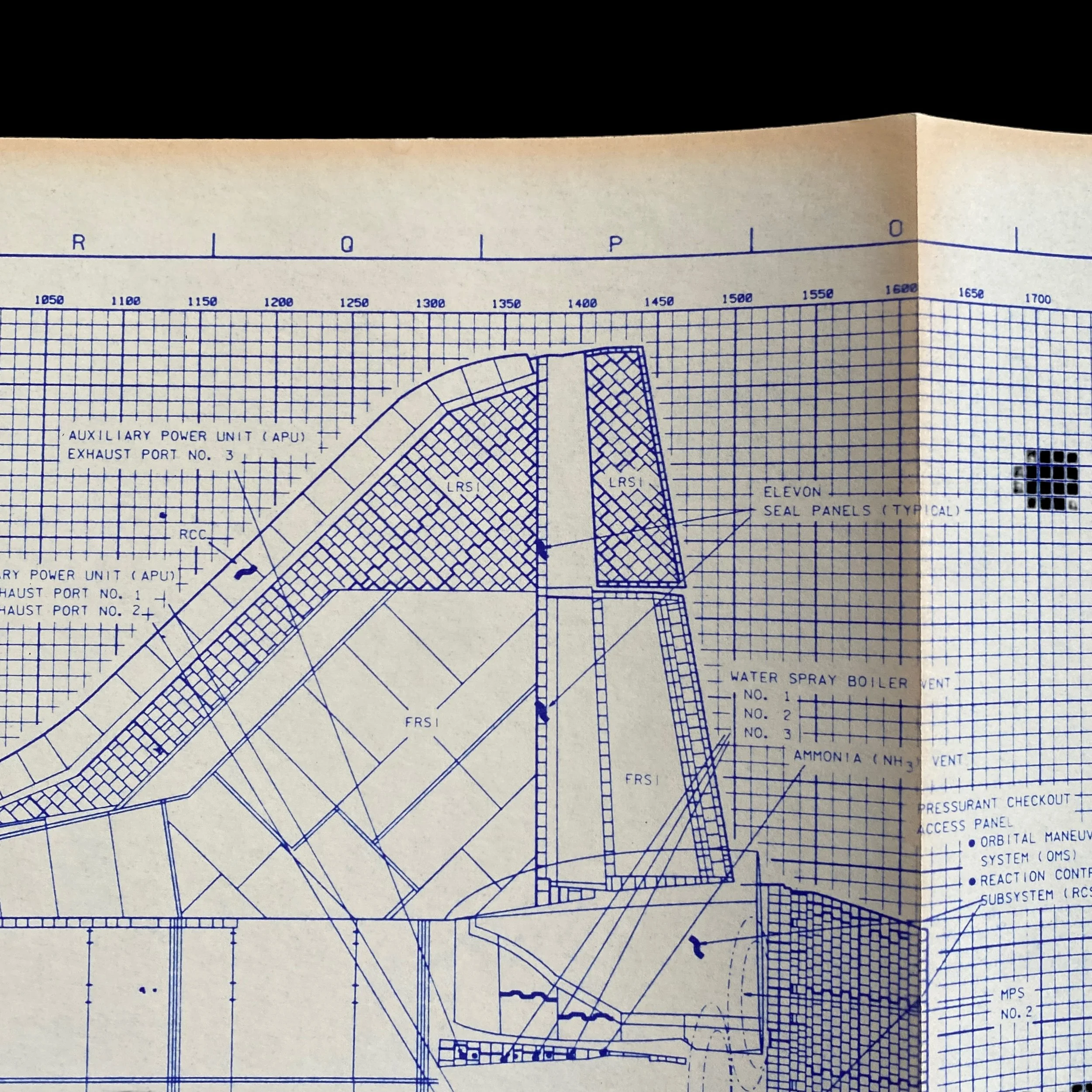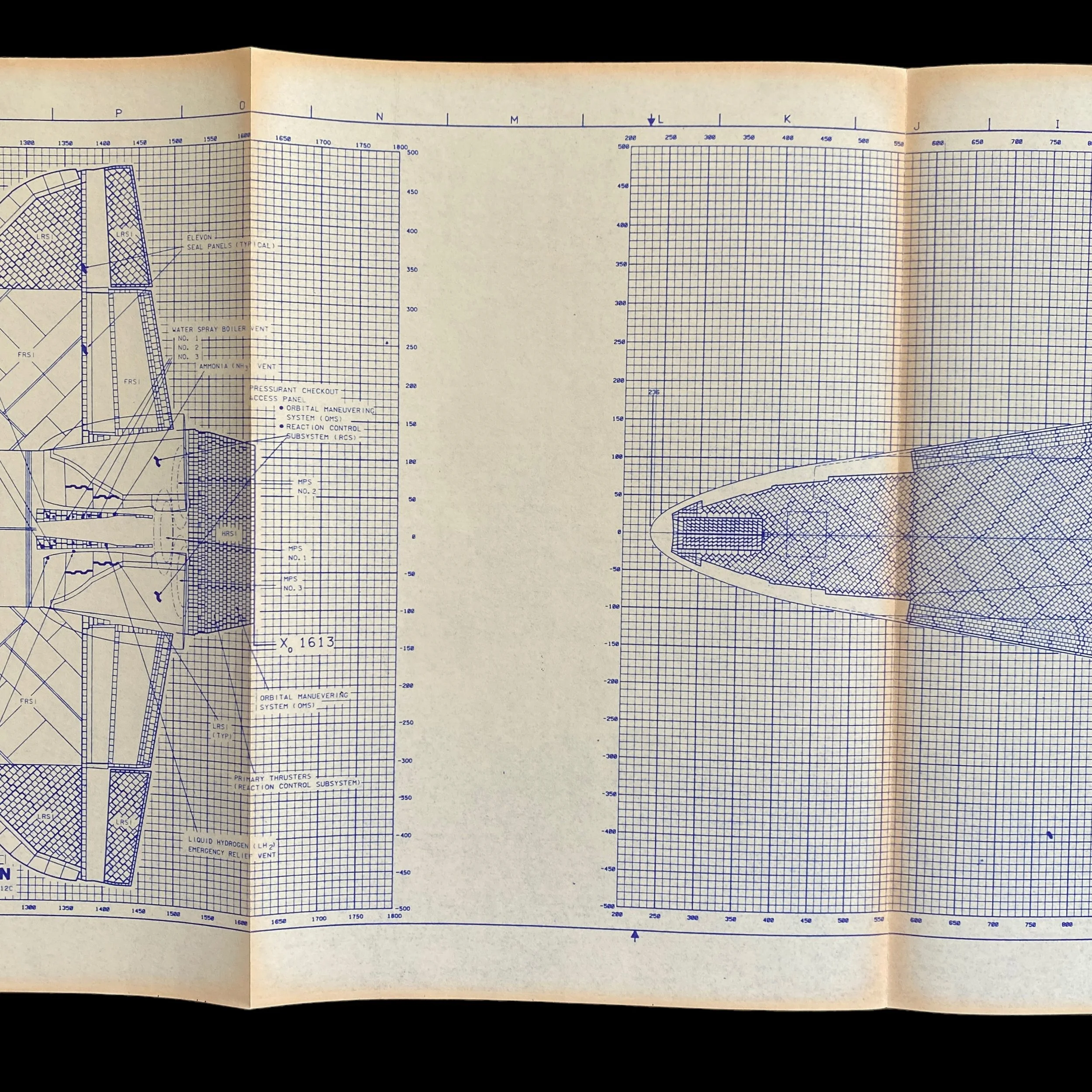VERY RARE! 1981 NASA Space Shuttle Program Space Shuttle Columbia & Challenger “TOP & BOTTOM EXTERNAL VIEW” Schematic Blueprint
















































VERY RARE! 1981 NASA Space Shuttle Program Space Shuttle Columbia & Challenger “TOP & BOTTOM EXTERNAL VIEW” Schematic Blueprint
Comes with a hand-signed C.O.A.
This incredibly rare and museum-grade 1981 dated original NASA Space Shuttle Program blueprint is an extremely detailed design “TOP AND BOTTOM EXTERNAL VIEWS” schematic blueprint of the early Space Shuttle Era Space Shuttle orbiters. Dated 1981 with numerous revisions dates, this NASA schematic systems blueprint is of the early NASA shuttles of Space Shuttle Columbia (OV-102) and Space Shuttle Challenger (OV-099).
Between the first launch on April 12, 1981, and the final landing on July 21, 2011, NASA's space shuttle fleet -- Columbia, Challenger, Discovery, Atlantis and Endeavour -- flew 135 missions, helped construct the International Space Station and inspired generations. NASA's space shuttle fleet began setting records with its first launch on April 12, 1981 and continued to set high marks of achievement and endurance through 30 years of missions. Starting with Columbia and continuing with Challenger, Discovery, Atlantis and Endeavour, the spacecraft has carried people into orbit repeatedly, launched, recovered and repaired satellites, conducted cutting-edge research and built the largest structure in space, the International Space Station. The final space shuttle mission, STS-135, ended July 21, 2011 when Atlantis rolled to a stop at its home port, NASA's Kennedy Space Center in Florida.
As humanity's first reusable spacecraft, the space shuttle pushed the bounds of discovery ever farther, requiring not only advanced technologies but the tremendous effort of a vast workforce. Thousands of civil servants and contractors throughout NASA's field centers and across the nation have demonstrated an unwavering commitment to mission success and the greater goal of space exploration.
Space Shuttle Columbia (OV-102):
NASA's Space Shuttle Columbia, also known as OV-102, was the first orbiter in the Space Shuttle program and one of the most iconic symbols of American space exploration. The Space Shuttle program was the world's first reusable spacecraft, designed to carry astronauts and payloads into low Earth orbit, conduct experiments and carry out construction missions. Over the course of its nearly 30-year history, Columbia played a significant role in advancing human knowledge and technology, making it one of the most important spacecraft in the history of space exploration.
Columbia was built by Rockwell International's Space Transportation Systems Division, with its first test flight taking place on April 12, 1981. The shuttle was named after the American sloop Columbia, the first American vessel to circle the world, and its emblem was a stylized representation of the American bald eagle. Columbia was one of five orbiters built as part of the Space Shuttle program, and it was the first to fly into space. Over the course of its operational life, Columbia completed 27 missions and orbited the Earth over 4,808 times, traveling a total of over 200 million miles.
One of the most notable missions of Columbia was the deployment of the Hubble Space Telescope in April 1990. The Hubble was carried into orbit by Columbia and deployed by the crew during a spacewalk. The telescope has since provided invaluable data and images of the universe, advancing our understanding of astronomy and cosmology. Another important mission of Columbia was the Spacelab Life Sciences 1 mission in July 1992, where the crew conducted experiments in human physiology and biology. This mission helped to lay the foundation for future long-duration missions to the International Space Station.
However, despite its many accomplishments, Columbia's final mission would prove to be its most tragic. On February 1, 2003, during re-entry into the Earth's atmosphere, Columbia suffered a catastrophic failure. The shuttle broke apart over Texas, killing all seven crew members on board. The loss of Columbia and its crew was a devastating blow to the space community, and it sparked a comprehensive investigation into the cause of the disaster.
The investigation found that a piece of foam insulation from the shuttle's external fuel tank had fallen off during launch and struck the leading edge of the shuttle's left wing. The impact caused a breach in the wing, leading to the destruction of the shuttle during re-entry. The findings of the investigation led to significant changes in the Space Shuttle program, including improved safety procedures and modifications to the shuttle's design.
In conclusion, NASA's Space Shuttle Columbia was a pioneering spacecraft that played a major role in advancing human knowledge and technology. Despite its tragic end, the legacy of Columbia lives on through the many important missions it completed and the impact it had on the space community. The Space Shuttle program may have come to an end, but the contributions of Columbia will always be remembered as a testament to human ingenuity and perseverance.
Space Shuttle Challenger (OV-099):
The Space Shuttle Challenger was one of the most significant events in the history of space exploration. This event marked a turning point in the United States' space program, as it brought attention to the dangers of space flight and the importance of proper safety measures. The Challenger disaster also had a profound impact on the American public, who were both shocked and saddened by the loss of the seven crew members on board.
The Challenger was the second shuttle in NASA's fleet, following the successful launch of the Columbia in 1981. The Challenger was designed to be a reusable spacecraft, capable of carrying up to eight crew members and a payload of up to 60,000 pounds into low Earth orbit. The shuttle was seen as a symbol of American technological prowess and was a source of pride for the country.
The Challenger was launched on January 28, 1986, from the Kennedy Space Center in Florida. This mission, known as STS-51-L, was supposed to be a routine mission to deploy a communications satellite into orbit. However, just 73 seconds after liftoff, the Challenger suffered a catastrophic failure, leading to the loss of the seven crew members on board.
The investigation into the Challenger disaster revealed that the cause of the accident was a failure in one of the shuttle's solid rocket boosters. The boosters were designed to burn for two minutes after liftoff, providing the necessary thrust to get the shuttle into orbit. However, a joint in one of the boosters failed, causing a leak of hot gases that ignited the fuel in the main tank. The resulting explosion caused the Challenger to break apart, killing all seven crew members on board.
The Challenger disaster had a profound impact on the American public, who were shocked and saddened by the loss of the seven crew members. The tragedy also brought attention to the dangers of space flight and the importance of proper safety measures. The investigation into the accident revealed a number of problems with NASA's management and decision-making processes, leading to significant changes in the way the agency operated.
NASA suspended shuttle launches for over two years while they worked to improve the safety of the shuttle program. This included changes to the design of the solid rocket boosters, as well as improvements to the overall shuttle design. The agency also implemented a number of new safety procedures and protocols, including more rigorous testing and inspection processes, to ensure that future missions would be as safe as possible.
In the aftermath of the Challenger disaster, NASA also made a number of changes to its approach to risk management. The agency recognized that there was always some level of risk associated with space flight, but it was important to ensure that risks were minimized as much as possible. NASA implemented new processes to assess the risks associated with each mission, and to make decisions about whether to proceed with launches based on these assessments.
The Challenger disaster was a tragic event, but it also served as a reminder of the risks associated with space exploration. The loss of the seven crew members on board the Challenger was a reminder that space flight is not without danger, and that proper safety measures must be in place to ensure the safety of the astronauts who bravely explore the unknown.
In conclusion, the Space Shuttle Challenger disaster was a turning point in the history of space exploration. It brought attention to the dangers of space flight and the importance of proper safety measures, and led to significant changes in the way NASA operated. The loss of the seven crew members on board was a tragedy, but it also served as a reminder of the risks associated with space exploration, and the need for ongoing efforts to improve safety and minimize risk in the future.